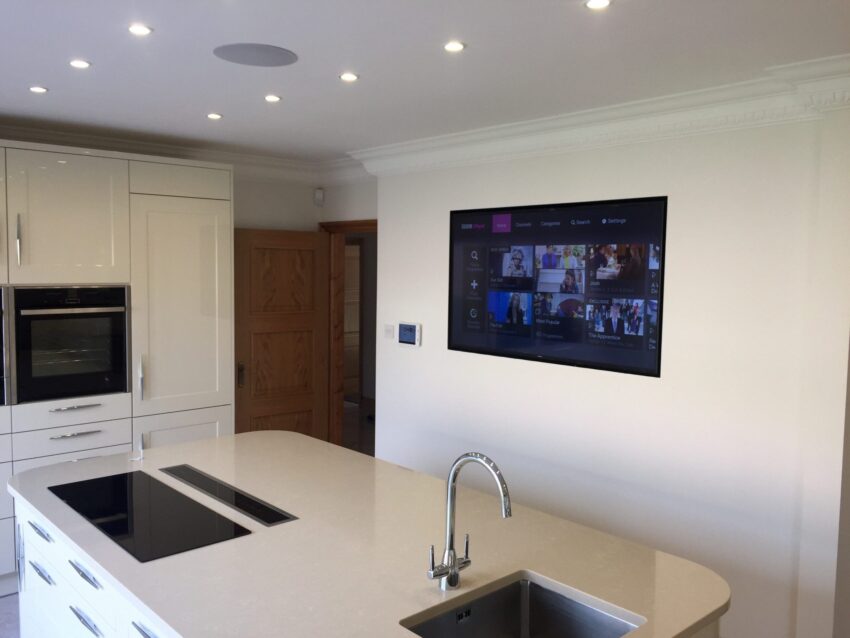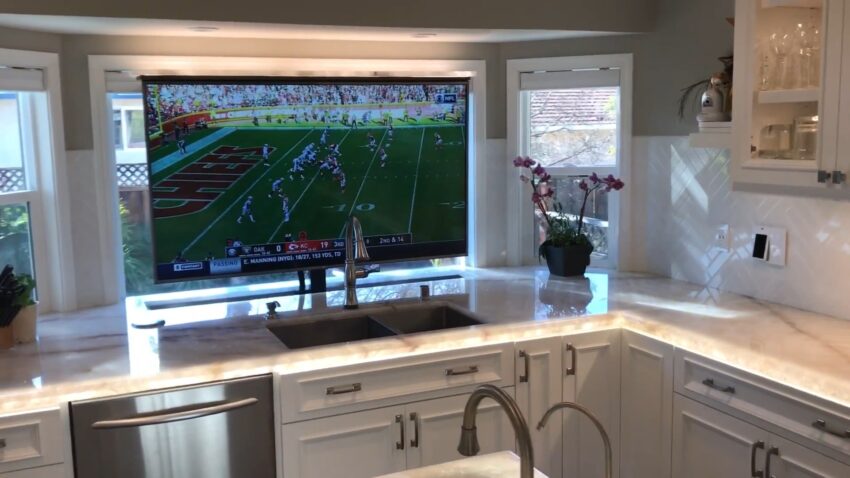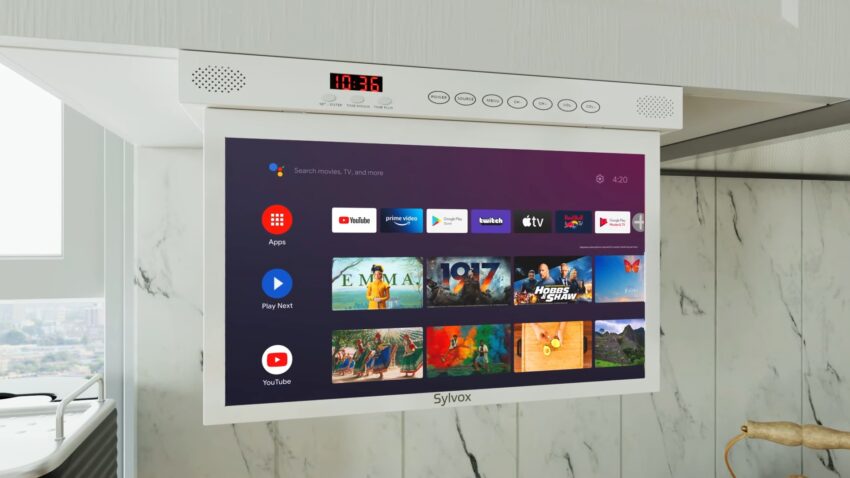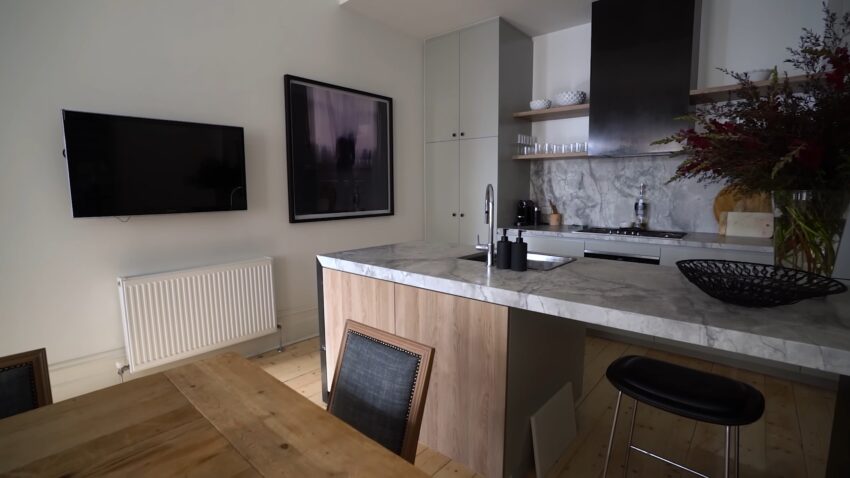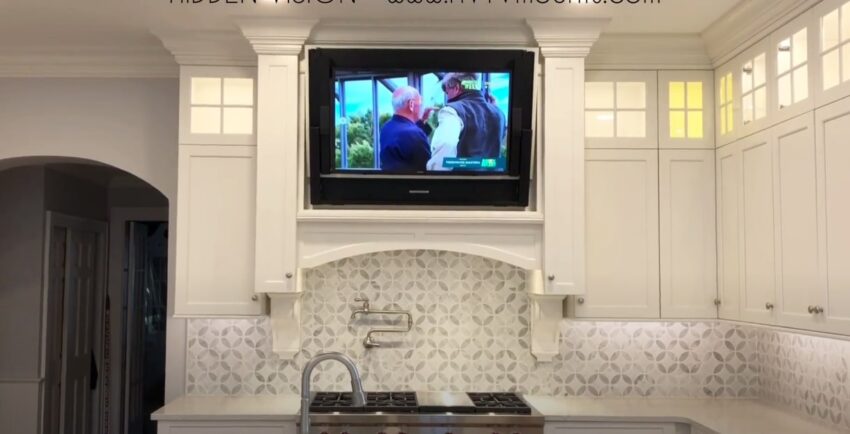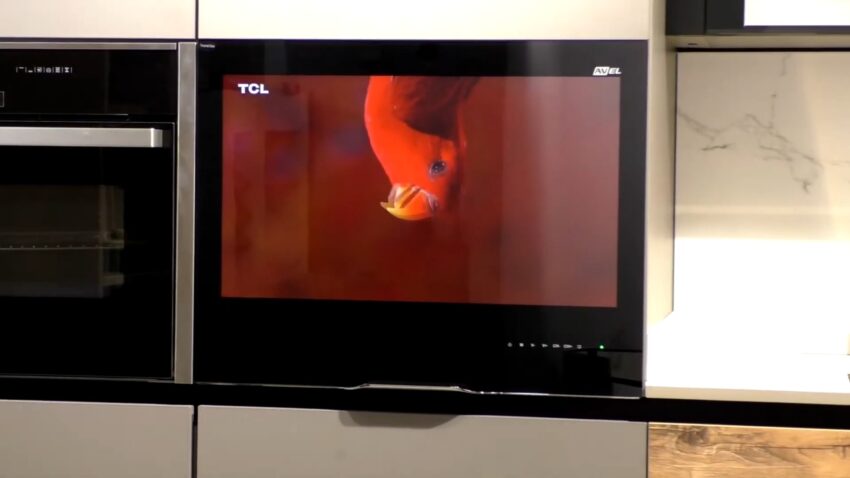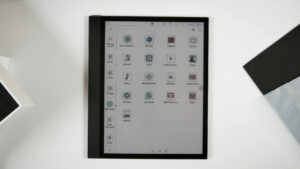The age-old idiom ‘the kitchen is the heart of the home’ has never been more accurate. With open-floor plans and integrated living spaces, our kitchens aren’t just for cooking anymore.
They are multifunctional spaces where we eat, socialize, work, and even entertain. Adding a television to this hub can make your kitchen even more versatile and enjoyable. But where should you place it? Let’s explore how to incorporate a TV into your kitchen stylishly without sacrificing function or aesthetics.
The Rise of the Kitchen TV
The idea of a TV in the kitchen is not as novel as one might think. Thanks to the increasing open-floor layouts and integrated technology, this concept is becoming more and more popular.
Changing Lifestyle Dynamics
Over the years, our lifestyle dynamics have dramatically shifted. Kitchens have morphed from utilitarian spaces into multipurpose rooms that are very much integrated into our daily lives.
Gone are the days when the kitchen was a space solely reserved for preparing meals. Today, it serves as a family gathering spot, a place to socialize, and even an entertainment center. Adding a TV to this versatile space can be a natural extension of its ever-expanding role.
Technology’s Contribution
The advancement in technology has made it easier than ever to add a television to your kitchen. From sleek, flat-screen models that can be mounted on the wall to under-cabinet units that fold away when not in use, your options are virtually limitless.
Not to mention, the integration of smart technology means you can stream cooking shows, news, or even connect to your favorite streaming services, all while you cook or eat.
Where to Place the TV: The Big Decision
So, you’ve decided to go for it — you’re putting a TV in your kitchen. Great! The next step is figuring out where to place it. Here’s a brief overview of what we’ll cover.
The Importance of Line of Sight
When considering where to place a TV in your kitchen, the line of sight is a critical factor. Ideally, you want to be able to view the screen from multiple areas – whether you’re chopping veggies at the countertop or enjoying breakfast at the dining table.
- Countertop Viewing: Make sure that the TV is at eye level if you’re primarily watching while cooking or preparing meals.
- Dining Table or Kitchen Island: If you like catching up on shows while eating, place the TV in a spot that’s easily viewable from your seating area.
- Visibility from Adjacent Rooms: In open-plan spaces, consider if the TV will also be visible from adjoining rooms like the living room or dining area.
Proximity to Electrical Outlets
When choosing the perfect spot for your TV, don’t forget to consider the logistics of power supply and connectivity. Placing the TV too far from electrical outlets could lead to unsightly cords stretching across your kitchen, disrupting the aesthetic and posing a tripping hazard.
- Above the Fridge: This is often close to a power source, making it convenient for the plug-in.
- Wall-mounted or Under-cabinet: Ensure there’s an electrical outlet nearby to avoid dangling cords.
- Kitchen Island: This could be a great option if you have built-in outlets.
The Stylish Options: From Wall Mounts to Hidden Cabinets
You’ve assessed your needs and decided on the optimal location. Now, let’s look at the variety of stylish options to make the addition of a TV in your kitchen as seamless and beautiful as possible.
Wall-Mounted TVs
A wall-mounted TV is often the go-to choice for many homeowners because it’s sleek and saves space. With various options like tilting mounts or swiveling arms, you can adjust the angle for optimal viewing from different parts of the kitchen.
- Frame it: Consider framing the TV to make it look like a piece of art. Custom frames can be matched with your kitchen cabinetry for a cohesive look.
- Accent Wall: Create an accent wall with tiles, paint, or wallpaper that complements the color and style of your kitchen while also serving as a backdrop for your TV.
Under-Cabinet TVs
If you’re dealing with a smaller kitchen or you want to keep your countertops clutter-free, under-cabinet TVs are a fantastic option. These units can be folded away when not in use, keeping your kitchen looking neat and organized.
- Swivel Function: Many under-cabinet models come with a swivel function that allows you to turn the screen for better viewing angles.
- Integrated DVD or Streaming: Some models offer built-in DVD players or smart functionality, providing more entertainment options without taking up additional space.
Hidden Cabinets and Pop-up Mechanisms
For those who prefer a more minimalist approach, hidden cabinets or pop-up mechanisms can conceal your TV when it’s not in use. These clever designs offer the best of both worlds: entertainment when you want it and a streamlined kitchen when you don’t.
- Motorized Lift: Imagine pressing a button and having your TV rise smoothly from inside an island or cabinet.
- Sliding Panels: A more manual but equally stylish option is a cabinet with sliding doors or panels that can hide or reveal the TV as needed.
Practical Considerations: Size, Screen Type, and Connectivity
When it comes to picking the right TV for your kitchen, there’s more to think about than just aesthetics. The size, type of screen, and connectivity options are equally crucial.
Size Matters: How Big Should Your Kitchen TV Be?
While it may be tempting to go for the biggest screen you can find, remember that a TV in the kitchen has different requirements compared to one in the living room. You’ll need to balance between a screen that’s large enough to enjoy but small enough not to overpower the room.
- Space Evaluation: Measure the space where you plan to place the TV. Make sure there’s enough room around it for ventilation and aesthetics.
- Viewing Distance: As a rule of thumb, the ideal viewing distance is approximately 1.5 times the diagonal measurement of the screen.
- Resolution: A smaller screen doesn’t mean you should compromise on quality. Opt for a higher resolution for clearer, crisper images.
Screen Type: What Works Best in a Kitchen Environment?
Kitchens are bustling places with varying levels of light, temperature, and even moisture. Therefore, the type of screen you choose should be able to withstand these conditions.
- Anti-glare Screens: These are great for kitchens with lots of natural light.
- Ventilation: Make sure the TV has proper ventilation, especially if you’re placing it near a heat source like the oven or stove.
- Durability: Consider a screen with a protective layer to shield it from potential splashes and spills.
Connectivity: Smart TVs, Streaming, and More
The last thing you want is a tangle of cables cluttering your kitchen. Thankfully, modern technology offers sleek and wire-free solutions.
- Wi-Fi Enabled: Opt for a smart TV that can connect to Wi-Fi, allowing you to stream directly without the need for additional devices.
- Bluetooth: This is a great option for connecting to external speakers or even your smartphone for a more immersive viewing experience.
- USB and HDMI: A few well-placed ports can give you the flexibility to connect other devices if needed, such as a gaming console or even your laptop.
The Final Touches: Accessories and Decor
So, you’ve got your TV up and running. What next? It’s time to add those final touches to make it an integral part of your kitchen’s decor.
Sound Systems: Enhancing the Audio Experience
Often, the built-in speakers of a TV may not provide the best audio experience, especially in a kitchen where there’s usually a lot of ambient noise. A soundbar or a set of high-quality external speakers can make a world of difference.
- Soundbar: These are sleek and can be mounted under the TV or even under a cabinet.
- Bluetooth Speakers: These can be placed anywhere in the kitchen, providing a more flexible audio setup.
- Built-in Ceiling Speakers: If you’re looking for a more integrated solution, ceiling speakers can offer excellent sound without taking up any counter space.
Remote Control Options
Let’s face it, a traditional remote control can easily get lost in the hustle and bustle of a busy kitchen. Here are some modern alternatives:
- Voice Control: Many smart TVs come with voice control features, enabling you to change channels, adjust volume, or even search for shows hands-free.
- Mobile Apps: Some TV models allow you to control them through an app on your smartphone, turning your phone into a remote control.
- Universal Remotes: These are designed to control multiple devices, minimizing the number of remotes you need to keep track of.
Decorative Aspects: Making the TV Blend In
A TV needn’t be an eyesore in your stylish kitchen. Here are some ideas to make it blend seamlessly with your decor:
- Matching Frames: A custom frame can make your TV look like another piece of artwork in your kitchen.
- Backlighting: Adding a soft backlight around the TV can reduce eye strain and add a decorative touch.
- Themed Decor: Use decor items around the TV that match the overall theme of your kitchen, be it modern, rustic, or eclectic, to create a cohesive look.
FAQs
Can I use a regular TV in the kitchen, or do I need a specialized one?
While you can use a regular one in the kitchen, it might be beneficial to consider specialized kitchen TVs that come with features like splash resistance, anti-glare screens, and built-in timers.
These are designed to withstand the unique challenges of a kitchen environment, such as moisture and varying light conditions.
How can I safely install a TV near my stove or other heat sources?
If you’re considering installing it near a heat source like a stove or oven, you should look into heat-resistant mounts and brackets.
Additionally, make sure there is adequate ventilation around the TV to dissipate heat. Some people opt for heat shields, which are panels that can deflect heat away.
Are there TVs that can sync with my smart kitchen appliances?
Yes, some smart variations have the capability to sync with smart kitchen appliances, depending on the brand and model. These can be connected via Wi-Fi or Bluetooth to share information or offer controls through a centralized interface on the screen.
This can be handy for monitoring cooking times, preheating ovens, or even checking what’s in your smart fridge.
What are the options for outdoor kitchen TV placement?
For outdoor kitchens, weather-resistant or waterproof televisions are highly recommended. These are designed to withstand elements like rain, snow, and extreme temperatures.
It’s crucial to place the TV in a location that minimizes glare from the sun, perhaps under a shaded structure. You can also consider outdoor TV covers for added protection.
How do I manage cables and wires for a clean look?
To manage cables and wires for a clean, clutter-free look, you can use cable management systems like conduits or cable organizers that can be painted the same color as your wall.
Alternatively, you can run the cables through the wall itself, although this might require professional installation. Some modern TVs also offer wireless power options, eliminating the need for a power cable.
Can I mount a TV myself, or should I hire a professional?
Mounting it is something you can do yourself if you’re handy with tools and comfortable following installation guidelines.
However, for complex setups, like a motorized lift inside a kitchen island or connecting the TV to multiple devices, hiring a professional is recommended to ensure safety and optimal functionality.
Final Words
With these insights, you’re now well-equipped to make an informed decision about adding a TV to your kitchen. Remember, the key is to blend form and function seamlessly. Choose a spot that offers the best line of sight, ensures easy access to electrical outlets, and complements the overall décor of your kitchen.
By integrating your TV stylishly, you’ll add another layer of comfort and functionality to the heart of your home.


